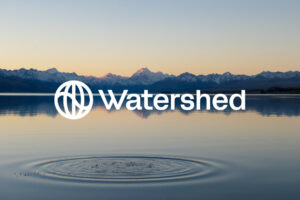Click here to learn more about the latest procurement trends for 2026.
The landscape of public sector procurement has undergone significant transformation in recent years, driven by advancements in technology, evolving regulatory frameworks, and an increasing emphasis on sustainability. Leveraging modern procurement technology has become essential for public sector organizations aiming to achieve efficiency, transparency, and compliance while meeting their social and environmental goals.
This blog explores the key considerations for public sector organizations when selecting procurement technology in 2025, reflecting the latest trends and best practices.
1. Harnessing Advanced Technologies & Proving Benefit
Modern procurement systems must integrate advanced technologies to streamline processes and enhance decision-making:
- Artificial Intelligence (AI) and Machine Learning (ML): AI and ML are now indispensable for automating repetitive tasks, such as supplier evaluations and contract management. Predictive analytics powered by ML helps organizations anticipate procurement trends and identify potential risks.
- Blockchain Technology: Blockchain ensures transparency, security, and traceability in procurement transactions. Public sector organizations can use blockchain to verify supplier credentials, prevent fraud, and enhance contract execution.
By adopting these technologies, public sector procurement teams can increase efficiency, reduce costs, and improve accountability. However, it is incumbent upon public sector procurement leaders to measure and demonstrate return on investment. If they fail to do so, it will become increasingly difficult to see technology projects through to a successful conclusion, and further investment may be more difficult to secure.Form
2. Navigating Regulatory Changes
Public sector organizations need procurement solutions that align with new frameworks, such as the UK Procurement Act, which comes into force in February. This legislation:
- Creates a simpler and more flexible, commercial system that better meets the public’s needs while remaining compliant with international obligations
- Opens up public procurement to new entrants such as small businesses and social enterprises so that they can compete for and win more public contracts
- Embeds transparency throughout the commercial lifecycle so that the spending of taxpayers’ money can be properly scrutinized.
These reforms and similar ones in other countries open up opportunities for public sector buyers. Modern procurement technology will enable public sector entities to secure maximum benefits by simplifying compliance and freeing procurement professionals to focus on strategic initiatives.
3. Embedding Sustainability and ESG Goals
Environmental, social, and governance (ESG) considerations are now central to public sector procurement strategies. Procurement technology should support:
- Sustainable Sourcing: Tools to evaluate suppliers based on their sustainability credentials, carbon footprints, and ethical practices.
- Diversity and Inclusion: Metrics to track and increase engagement with diverse suppliers, such as minority- or women-owned businesses.
Integrating ESG tracking into procurement systems ensures that public sector organizations meet regulatory requirements and respond to stakeholder expectations.
While issues such as trade barriers will come to the fore in 2025, ESG remains a must for most public sector organizations at local, state, federal and multinational level, not least because they are expected to be exemplars, but also because the costs of non-compliance are high. In the USA the penalties that can be imposed by the Environmental Protection Agency include civil penalties, injunctive relief and in the worst cases criminal penalties. The EU, meanwhile, has been working hard to harmonize environmental crime laws across Member States. In many countries, offenders may be required to restore the damaged environment and compensate for harm caused. Additionally, the European Commission can take legal action against Member States failing to comply with EU environmental laws, potentially leading to lump sum payments or daily fines until compliance is achieved.
4. Strengthening Cybersecurity
The rise in cyber threats has made robust security measures a non-negotiable aspect of procurement technology. Public sector organizations must prioritize solutions that include:
- Advanced encryption to protect sensitive procurement data.
- Regular security updates and monitoring to prevent breaches.
- Role-based access controls to ensure only authorized personnel have access to critical information.
Cybersecurity and data protection best practices, including the EU’s GDPR, and its closest US equivalents, such as CCPA, must be embedded in public sector organization’s procurement processes as part of their overall corporate governance strategy. They must safeguard the integrity, authenticity, and confidentiality of every transaction. The past two years have seen an alarming rise in the number of cyberattacks against purchasing authorities, so it is vital to carry out a risk assessment and build resilience.
5. Enhancing User Experience and Accessibility
User-friendly interfaces and intuitive systems are crucial for the successful adoption of procurement technology. Modern platforms should:
- Feature streamlined workflows to simplify complex procurement tasks.
- Provide accessibility features to ensure inclusivity for all users.
Systems with minimal learning curves and responsive support drive better user adoption and efficiency. However, usability is not enough in itself. You can implement the best and most usable technology on the planet, but without the sponsorship of senior stakeholders, individuals may be resistant to change. Leaders in public procurement must be more proactive in promoting the benefits of technology.
6. Leveraging Data Analytics for Strategic Insights
Public sector organizations generate vast amounts of procurement data. Advanced analytics capabilities transform this data into actionable insights by:
- Predictive Insights: Identifying future procurement risks and opportunities.
- Spend Analysis: Offering detailed visibility into spending patterns, enabling cost optimization.
- Supplier Performance Metrics: Providing real-time evaluations of supplier reliability and performance.
Data-driven decision-making empowers public sector teams to improve efficiency and achieve better outcomes. Public sector departments and agencies should focus more on examining their contracts and benchmarking costs to uncover hidden inefficiencies and negotiate better terms with suppliers, unlocking significant savings. Public sector organisations often under-utilize data that is readily available from their suppliers. By examining costs in more granular detail from the bottom up, public sector organizations will be better able to negotiate terms with suppliers.
7. Digitally Transforming Procurement
Public sector organizations should seek procurement technology solutions that reflect global standards and best practices, such as:
- Digital transformation across the entire source-to-pay process.Interoperability with global supply chains to expand sourcing options and improve resilience.
- Compliance with international frameworks such as the United Nations Sustainable Development Goals (SDGs).
Public sector organizations that want to achieve world-class efficiency in 2025 and beyond, automate recurring processes and take cooperation with suppliers to a new level need to implement a fully digitalized source-to-pay process to integrate with other budget-holding functions within your authority or agency. It won’t happen overnight, but it is essential to think ahead so 2025 is the year to build a digital transformation roadmap. It is impossible to manage multiple suppliers, and to switch between them with agility, without digital processes and powerful workflows.Form
Conclusion
Procurement technology has become a cornerstone of modern public sector operations. In 2025, organizations must prioritize solutions that incorporate advanced technologies, align with regulatory requirements, support ESG goals, and provide robust cybersecurity. By selecting the right procurement tools, public sector teams can drive efficiency, improve transparency, and achieve long-term success.
For more insights on selecting the right procurement technology for your organization, contact JAGGAER today.




